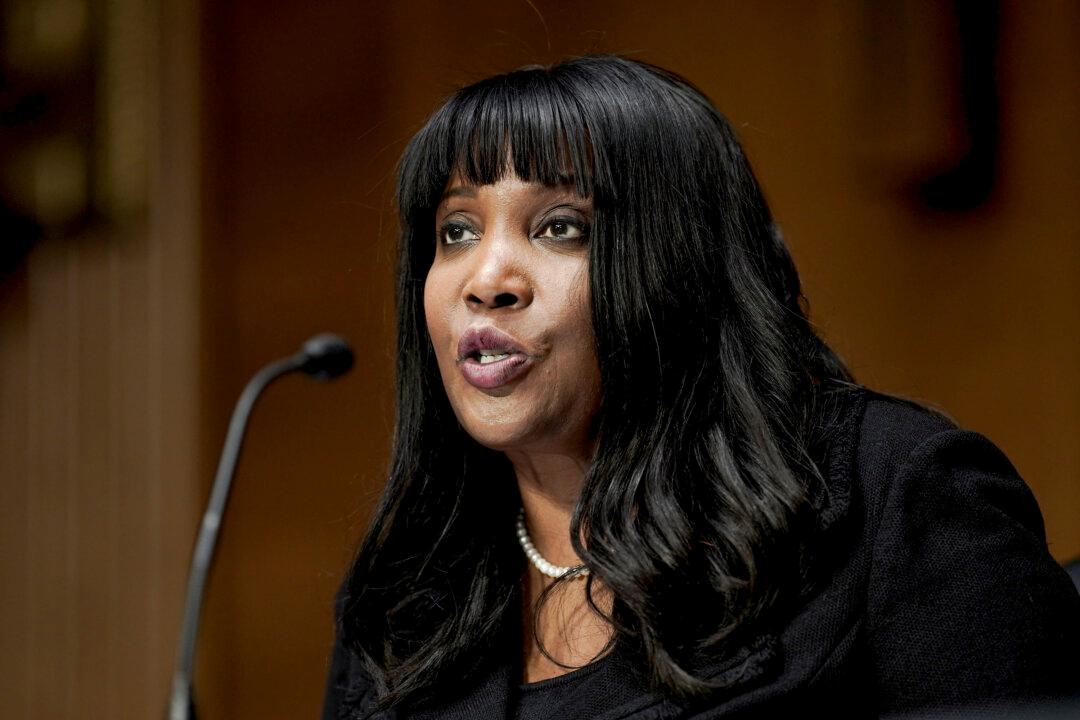The Federal Reserve is continuing to “push” banks to borrow from the central bank to help destigmatize the use of the discount window, Fed Gov. Lisa Cook said at a Brookings Institution event on May 8.
When the Federal Reserve was established in 1913, the discount window was available to struggling financial entities.
For more than a century, the Fed had been considered the lender of last resort.
Typically, the central bank dissuaded banks from tapping the window unless they were on the brink of failure.
Although the draft proposal has yet to be greenlit, officials are talking up the discount window and trying to persuade financial institutions to use the instrument even if they do not need to borrow.
“We continue to push the discount window,” Ms. Cook said, adding that “efficiencies can be improved.”
While the discount window was performing well during the COVID-19 pandemic and the regional banking crisis, supervisors and regulators are “encouraging banks to pre-position collateral” in case of a downturn.
So far, this initiative has resulted in about $1 trillion being pre-positioned.
Additionally, the number of entities with collateral pledged was 2,971 last year, 11 percent higher than in 2022.
“The discount window supports the smooth flow of credit to households and businesses and plays an important role in supporting the liquidity and stability of the banking system and the effective implementation of monetary policy,” the Fed Board of Governors said in the report.
“It is important for institutions to maintain a level of operational readiness to borrow from the discount window as part of their contingency funding plans.”
Officials Tout Discount Window Usage
Over the past year, Ms. Cook’s colleagues have repeatedly championed discount window borrowing without a crisis in the background.In December 2023, Fed Vice Chair for Supervision Michael S. Barr recommended that banks use “the discount window in good times and bad.”
Because many companies were unprepared to tap Fed liquidity, the central bank is attempting to remedy this situation, he noted.

“While the federal banking agencies have encouraged institutions to be prepared to access discount window loans, we should also seriously consider whether we should finally recognize discount window borrowing capacity in our assessment of a firm’s liquidity resources,” she said at a Committee on Capital Markets Regulation event.
Ms. Bowman agreed that there is a “perception of stigma” surrounding discount window borrowing.
Although she said she does not believe that mandating pledges will be effective, she said the potential shame of borrowing from the lender of last resort can be mitigated by exploring measures that the central bank can employ.
“One of the emerging arguments about how the Federal Reserve can mitigate stigma concerns is simply by mandating that banks pre-position collateral and periodically borrow from the discount window,” the Fed official said.
“Periodic borrowing by every bank would make it even more clear that borrowing is not in any way a negative signal,” Ms. Logan told the Texas Bankers Association in prepared remarks.
Endorsements and Questions
The proposal has received several endorsements in recent months because it would bolster the industry’s financial stability and increase banks’ liquidity positions.Former New York Fed chief William Dudley, who authored the report, argued that mandating banks to pre-position at the discount window “would enable banks to obtain immediate liquidity in times of stress, avoid fire-selling assets, and shield uninsured depositors from risk.”
Stijn Claessens, project director of the G30 Working Group on the 2023 Banking Crisis and former head of financial stability policy at the Bank for International Settlements, said he believes that this blueprint would be the “most important, most feasible, and lowest-cost reform.”
Susan McLaughlin, an executive fellow at the Yale School of Management, questioned if this could muddy the waters between a well-positioned bank and a struggling institution.
Ultimately, the banking sector is heeding the central bank’s calls, as discount window borrowing recently climbed to its highest level in a year.







